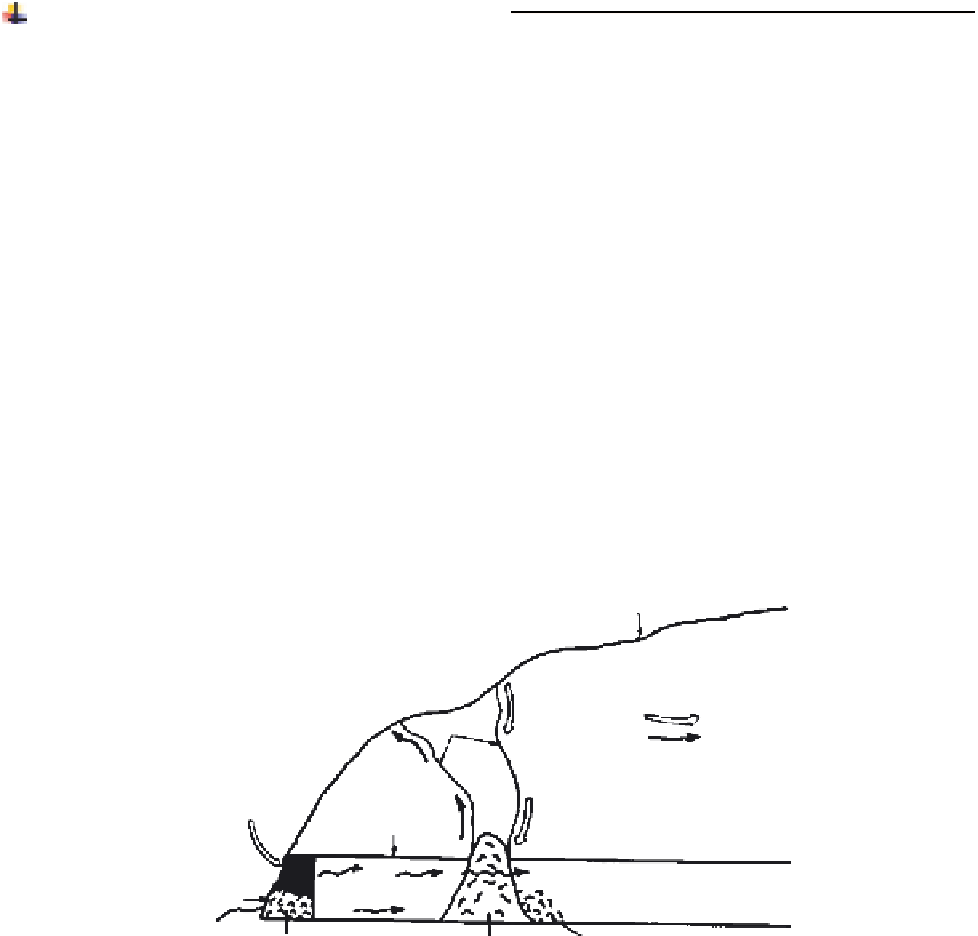Geology Reference
In-Depth Information
Discontinuous Fire Propagation
A
typical mine fire generates a higher pressure area which forces heated fumes deeper into the mine while drawing
cooler air from the outcrop, through fractures or from other areas of the mine. This type of internal convection cell
may account for the discontinuous propagation of mine fires. Even when the supply of oxygen is relatively low,
continuous heating at low temperatures may drive off inherent water from the coal and allow for increased
absorption of oxygen. Experimental data (Scott, 1944) has shown that accelerated oxidation begins at temperatures
between 80 and 120°C for anthracites, depending to some extent upon the amount of prior oxidation. Accelerated
reactions begin for bituminous coals at temperatures as low as 50
-
70°C (Kuchta et al., 1980).
If coal fires were propagated by a flame spread mechanism, coal adjacent to the burning mass would be heated by
conduction or radiation to its ignition temperature (Chaiken et al., 1979). Propagation of the fire would follow a
continuous pathway. However, in many AML fires, combustion zones are discontinuous, with no apparent
propagation pathway (Chaiken et al., 1983; Michalski et al., 1988; Rushworth et al., 1989; Dalverny et al.,
1990; Kim et al., 1992; Kim and Dalverny, 1994). In these fires, the movement of hot gases is believed to be a
factor in propagation. The fire induces circulating air currents, which carry fumes and heat into nonadjacent areas
(Figure 16.3.3.). The effective ambient temperature of a large area of the mine is slowly increased. At temperatures
approaching 100°C, the coal is conditioned by drying, leading to accelerated oxidation reactions. If the heat is not
dissipated, the temperature of the coal continues to rise until spontaneous ignition occurs.
Surface
Legend
Air
Fumes
Fresh air
Entry
Drying
Oxidation
Spontaneous ignition
Coal
outcrop
Heat and fumes
Combustion
Zone 1
Subsidence
area
Combustion
Zone 2
Figure 16.3.3. Postulated mechanism for discontinuous-fire propagation in abandoned coal mines: migration of
hot gases, surface drying, increased oxidation rate, and spontaneous ignition. From Kim and Chaiken 1993, p. 25.

